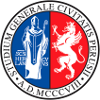Study-unit ECOLOGY OF FRESH WATERS
| Course name | Biology |
|---|---|
| Study-unit Code | GP004105 |
| Curriculum | Bioambientale |
| Lecturer | Massimo Lorenzoni |
| Lecturers |
|
| Hours |
|
| CFU | 6 |
| Course Regulation | Coorte 2022 |
| Supplied | 2022/23 |
| Supplied other course regulation | |
| Learning activities | Caratterizzante |
| Area | Discipline del settore biodiversità e ambiente |
| Sector | BIO/07 |
| Type of study-unit | Obbligatorio (Required) |
| Type of learning activities | Attività formativa monodisciplinare |
| Language of instruction | Italian |
| Contents | This course gives a detailed understanding of biodiversity and ecology of freshwater systems: it aims to develop their understanding of the principles and concepts of aquatic biology, and to provide students with an insight into the complexities of managing aquatic habitats. As well as gaining a broad understanding of ecological sciences, students also study organisms in their natural environment: from plankton to freshwater fish and from mountain streams to lowland lakes. The course covers the ecology of freshwater systems, as well as aspects of management and the nature of threats to aquatic systems, including pollution and eutrophication control. There is an element of great practice of this course which includes some field exercises to learn ecology (biotic and abiotic factors) of watercourses of the catchment of the river Tiber. |
| Reference texts | Bettinetti R., G. Crosa, S. Galassi. 2007. Ecologia delle acque interne. Edizioni CittàStudi. Dispense del docente. |
| Educational objectives | The course aims to introduce the basic concepts of ecology of inland waters and give students the tools they need to know the populations of lakes and rivers. |
| Prerequisites | knowledge of general ecology |
| Teaching methods | Frontal lessons with practical exercises |
| Learning verification modality | Written exam at the end of the course (first exam in June). Oral exam in all other sessions scheduled on the calendar. Methods of evaluation of the written test: 1. number of tests that contribute to the evaluation: 3 2. objective of the tests: to evaluate the specific knowledge of the student. 3. method of administration: written 4. timing of the tests: at the end of the course, in June 5. duration of the tests: 30' 6. typology: 100% closed-ended questions 7. final measurement of the exam: average of the results of the 3 written tests. For information on support services for students with disabilities and / or SLD, visit the page http://www.unipg.it/disabilita-e-dsa " |
| Extended program | Introduction to the study of inland waters. Lotic and lentic environments: differences. Ecological value and functions of wetlands. Differences between subaerial and aquatic environment. The populations of aquatic environments. Plankton, benthos, nekton, psammon, neuston, periphyton. River ecology. Structural and functional aspects of lotic systems. The catchment area. Morphological aspects of lotic systems. Springs. The populations of springs. River morphology. Flow rates, the hydrological regime. Energy flow. Use of organic matter. The populations of running water. River zonation. River Continuum Concept. Nutrient spiraling. The lakes. Origin of the lakes. Morphology of the lakes. Hypsometric curves. Light and energy flow. Zonation of the lakes. Epilimnion, metalimnion, ipolimnion. Thermocline. Temperature profiles in lakes of the temperate zone. Dissolved oxygen. The inorganic carbon. The carbonate-bicarbonate buffer system. The phosphorus in aquatic environments. Cycle of nitrogen in inland waters. Lakes and trophic status. Trophic evolution of a lake. Ponds and marshes. The dams. Characteristics of the reservoirs. Impact of dams on lotic ecosystems. Pollution and eutrophication in lotic and lentic ecosystem. |


